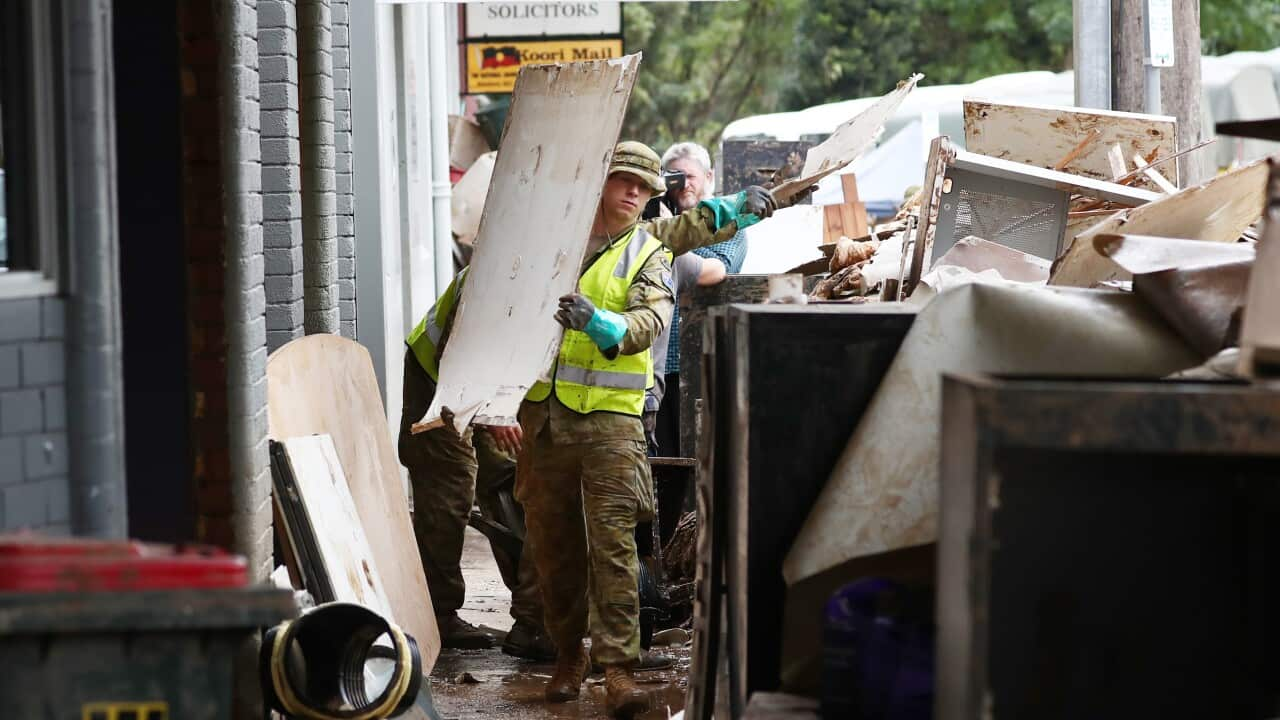Prime Minister Scott Morrison is planning to declare a national emergency in response to devastating flooding in northern NSW.
The declaration would give the federal government power to deploy additional resources to impacted areas, including from the Australian Defence Force for communities without waiting on a request from state governments for assistance.
It is a legislative power that Mr Morrison sought after the 2019-2020 bushfire crisis that allowed Commonwealth assets to be directed to disaster-hit areas.
Mr Morrison is travelling to Lismore on Wednesday, where he will meet with communities heavily impacted by the extreme flooding.
In Lismore, four people have died and hundreds have been displaced and thousands of homes and businesses have been destroyed.
There are 1,800 ADF personnel on the ground in northern NSW assisting flood recovery efforts, with that number set to grow to 2,500 by the end of the day.
The prime minister has been holding rolling meetings of federal Cabinet's expenditure review committee during the NSW and southeast Queensland floods emergency to consider how communities can be supported, alongside the NSW and Queensland governments.
Mr Morrison is also expected to announce more funding to help rebuild shattered communities and local businesses, with a focus on longer-term reconstruction projects.
In NSW, the rain has eased in but flooding continues around the state as a new threat has emerged with damaging winds threatening to topple trees and down powerlines.
The Bureau of Meteorology said gusts up to 111km/h are expected for the Mid North Coast, Central Coast, Hunter, Sydney, Illawarra and South Coast regions, with conditions forecast to ease later on Wednesday.
People are also being warned to keep away from beaches from the Hunter through to the South Coast because of hazardous and dangerous surf.
The torrential rain that has battered the east coast for more than a week has eased, but flooding continues and there are more than 60 evacuation orders across NSW.
The NSW State Emergency Service received nearly 3,000 calls for help in the past 24 hours.
The east coast low that brought the rain is now off the Illawarra coast and moving south.

Thousands of people's belongings have been cleared out of their homes after the floods. Credit: Olivia Katz/The Heart Atlas
"This is a catastrophic event and when you have a look at the size and magnitude of it," he told the Seven Network from the northern flood-ravaged town of Coraki.
"It runs from the northern part of the state down through Sydney but also into the southern part of NSW.
"It is a major clean-up job," he said.
But Brigadier Robert Lording, who is on the ground in Lismore on Wednesday, said ADF personnel were moving from multiple sites around the country to staging sites out of Sydney and Melbourne.
"We have to give them the equipment they need," he told the Nine Network.
"Most importantly, we need to have the conditions here on the ground to be able to sustain them and support them.
"That was particularly important the first few days of the operation.

Lismore locals help with the clean-up in the Central Business District in Lismore, Northern NSW. Source: AAP / Jason O'Brien
"If ... community members hadn't stepped up, then we would have been seeing a death toll in the hundreds of people," Senator Watt told ABC Radio.
"While people are grateful for the assistance they've had from the army, there's just nowhere near enough of it."
Meanwhile, Sydney Trains is warning the severe weather is causing significant disruption and delays and is advising commuters to avoid non-essential travel.
There's major flooding along the Hawkesbury River in western Sydney at North Richmond, Windsor, Sackville, Lower Portland and Wisemans Ferry.
SES Assistant Commissioner Sean Kearns says the river is still rising with a peak of 14.3 metres expected at noon, "as high if not higher than what people experienced in March last year".
Around 40,000 people in NSW are under evacuation orders, including in dozens of suburbs around Greater Sydney, after unrelenting torrential rain on Tuesday.
The death toll from flooding increased to eight on Tuesday with the discovery of two bodies in a stormwater canal at Wentworthville in Sydney's west.
In the Northern Rivers, a fifth flood-recovery centre will open on Wednesday at Casino, joining others already operating at Mullumbimby, Murwillumbah, Kyogle and Lismore.
With additional reporting by Tom Stayner.




